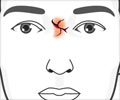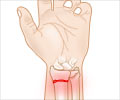A new study has established a definite link between risk of pelvic fractures and radiotherapy in older women. According to the study
A new study has established a definite link between risk of pelvic fractures and radiotherapy in older women. According to the study, women who receive radiotherapy for cervical, rectal or anal cancers have an increased risk for fracture of the pelvis. This study highlights the need other alternative forms of cancer treatment in the elderly.
Falls are the leading cause for mortality and morbidity worldwide, second only to road traffic accidents. Adults over the age of 70 years, more specifically women have significantly high fall related mortality rates in comparison to young adults. Pelvic fractures also pose a serious threat to the health of older women and are often the most common reasons for illness and death. The lifetime risk of a hip fracture after 50 years of age for white women is estimated at 17 percent.Approximately 10 to 20 % of those with a hip fracture die at an early age, usually within the first year after the event. The number of deaths due to hip fractures is comparable with the number of deaths due to pancreatic cancer and is only slightly lower than the number of deaths due to breast cancer.
The researchers conducted a study to determine if women who underwent pelvic irradiation were more likely to have a higher rate of pelvic fracture than women with pelvic malignancies who do not undergo irradiation. Nearly 6, 428 women, aged 65 years or older who had been diagnosed with pelvic malignancy were included for the study.
The incidence of pelvic fractures was considerably high in the irradiated group than in the nonirradiated group. The above results were true for all three forms of pelvic malignancy, cervical cancer, anal cancer and rectal cancer. Infact, the radiation therapy risk associated with pelvic fracture increased by a margin of three in women who underwent radiotherapy.
Difficulty in accessing the inguinal lymph nodes and the irradiation of the femur has been believed to be responsible for the high risk for pelvic fracture in women with anal cancer. These patients should be appropriately cautioned regarding the risk for fracture and falls, and should be monitored during the entire course of treatment by bone mineral densitometry screening. Approaches targeted towards prevention of osteoporosis and falls in this high-risk category has to be materialized in the near future.











